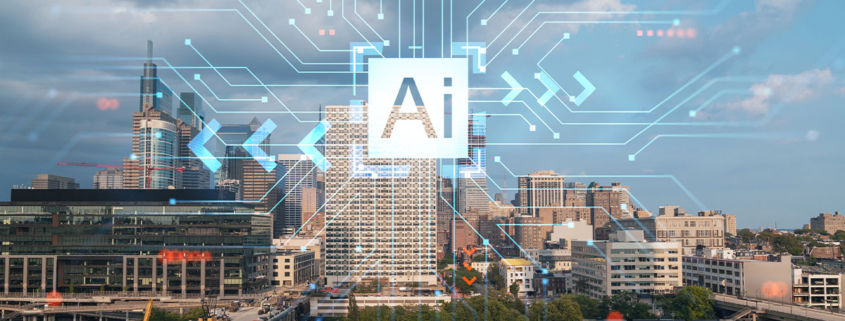The Benefits of AI for the Construction Industry
Artificial intelligence (AI), introduced in our recent Insight here, has much to offer today’s construction industry. With solutions that can improve jobsite performance and productivity, AI can provide forward-looking construction companies and contractors great opportunity and potential.
AI can play a critical role across all stages of the construction process—from pre-construction and pre-design to design development, project management, bidding and negotiation, quality control, and worker safety.
For example, AI can optimize labor and material allocation, making scheduling more efficient. AI-powered cameras and sensors can monitor job quality in real time and alert supervisors to problems and defects. They can monitor jobsites for potential safety hazards and alert workers and supervisors before injuries occur.
Benefits of AI
Here are a few ways that your construction firm could potentially benefit from AI:
Take advantage of parametric design. Firms today are using AI to alter design parameters and create new designs that weren’t conceivable before. AI tools analyze thousands of blueprints and use this data to come up with creative new design elements and variations, such as intelligent room layouts. These tools can also modify existing designs to fit within specific project constraints.
Streamline project management. Smooth and hassle-free project management is one of the biggest keys to construction profitability. AI can help you vet projects for potential bids, assess project feasibility, and monitor supply chains to keep projects on track and avoid cost overruns. Building information modeling (BIM) is a specific form of AI that monitors completed projects and offers suggested modifications and predictive maintenance recommendations that go beyond regular preventative maintenance.
Enhance jobsite safety. AI can make recommendations designed to minimize accidents on the jobsite and keep workers safe. This includes construction wearables like smart hard hats, smart footwear, and smart bodywear that monitor the surroundings and warn construction workers about potential fall risks, electrical shocks, and other environmental dangers.
Improve environmental sustainability. Boosting sustainability is one of the biggest challenges faced by construction firms today. AI tools can analyze environmental, emissions, material, and energy consumption data from jobsites to suggest ways that construction projects can be completed in more environmentally sustainable ways.
Automate tedious manual tasks. Construction drones and robots use AI to perform manual tasks automatically, increasing precision and accuracy, reducing material waste, and eliminating the fatigue factor. For example, drones can compare aerial land surveys to construction blueprints to determine if changes should be made to work around unforeseen obstacles. And large equipment like earth movers and bulldozers can be operated using AI guidance systems, eliminating the potential for human error.
Enhance quality control and mitigate risks. No construction project is perfect, so the inspection process is critical in identifying errors and defects on jobs and repairing them quickly. However, manual inspections and repairs take up valuable time that can set projects days or even weeks behind schedule. Construction drones and robots can capture images and data that AI can then quickly analyze to identify defects and structural weaknesses that don’t meet specifications.
Improve hiring and retention. Identifying and hiring the right people for the right jobs is a major challenge for contractors given the ongoing construction labor shortage. AI can help streamline the process by analyzing the data on applicants’ resumes and cover letters and comparing it to job requirements to narrow down the list of candidates. It can also help predict which current employees are best suited for managerial and leadership positions, as well as which ones might be at the greatest risk of resigning.
Barriers to AI Implementation
Despite these potential benefits, there are key barriers that could delay widespread implementation of AI in the construction industry. One of the biggest is cost, which could limit the bulk of AI usage to larger firms, at least in the near future.
Another is hesitation by some construction professionals to fully embrace AI. Despite technology advances, the construction industry is still heavily reliant on handshakes and face-to-face interactions between human beings. As a result, some industry veterans are resistant to anything they believe might threaten this.
However, savvy contractors have much more to gain than risk with AI. With its widely increasing prevalence and potential benefits, now is the time to seriously consider, explore, and learn about how AI could enhance your firm’s operations and bottom-line now and in the future.
